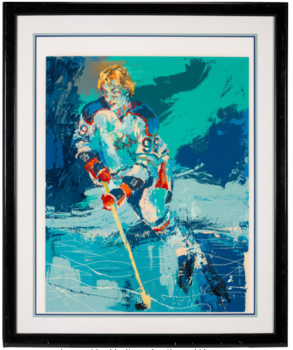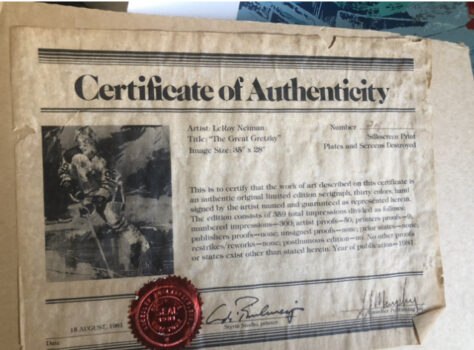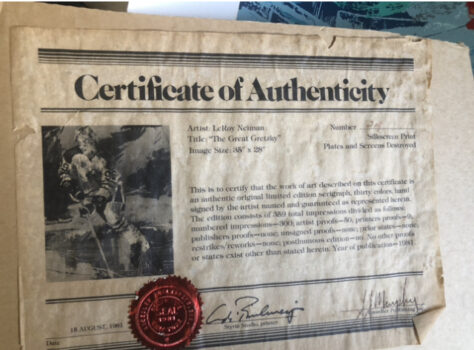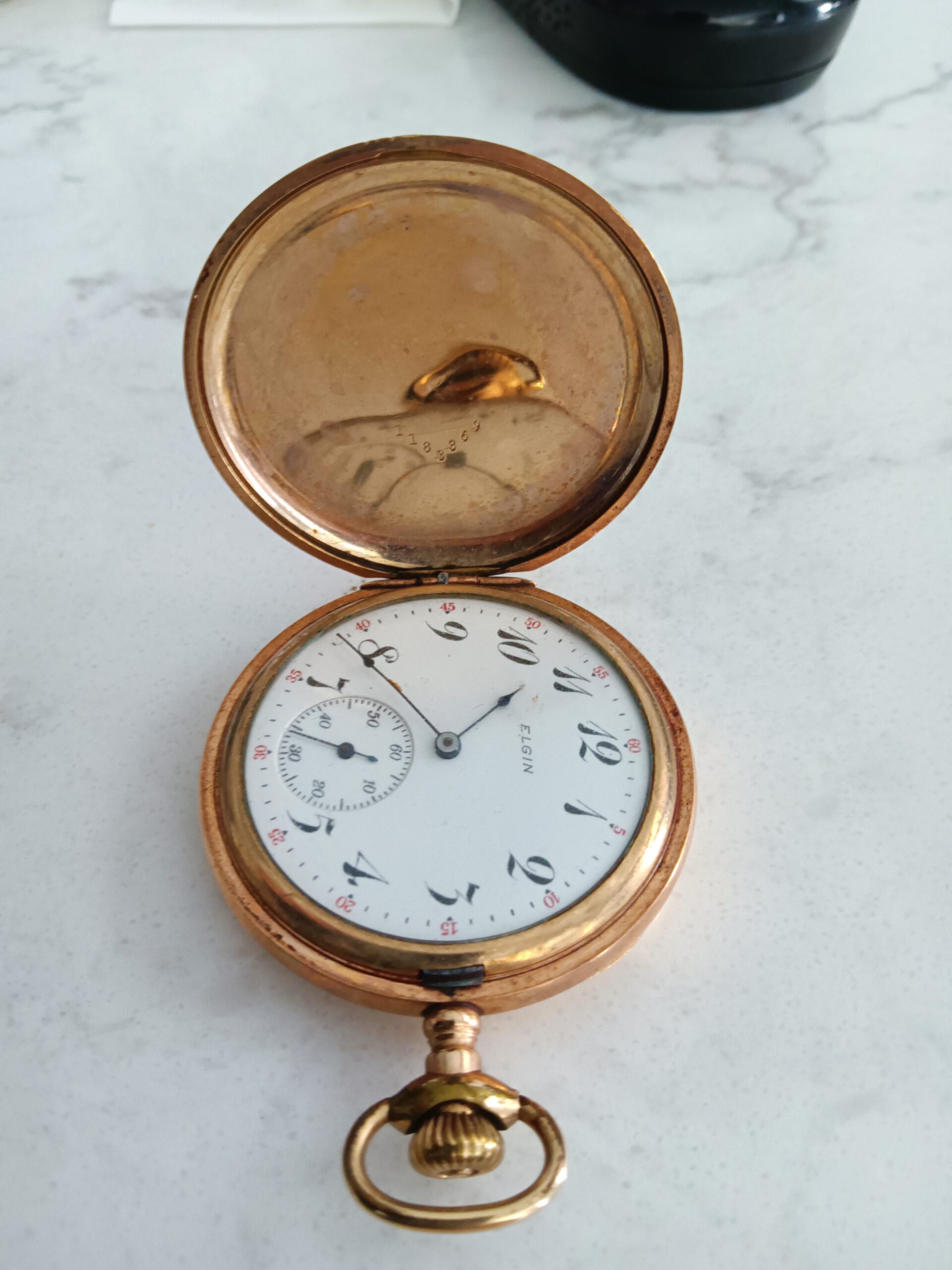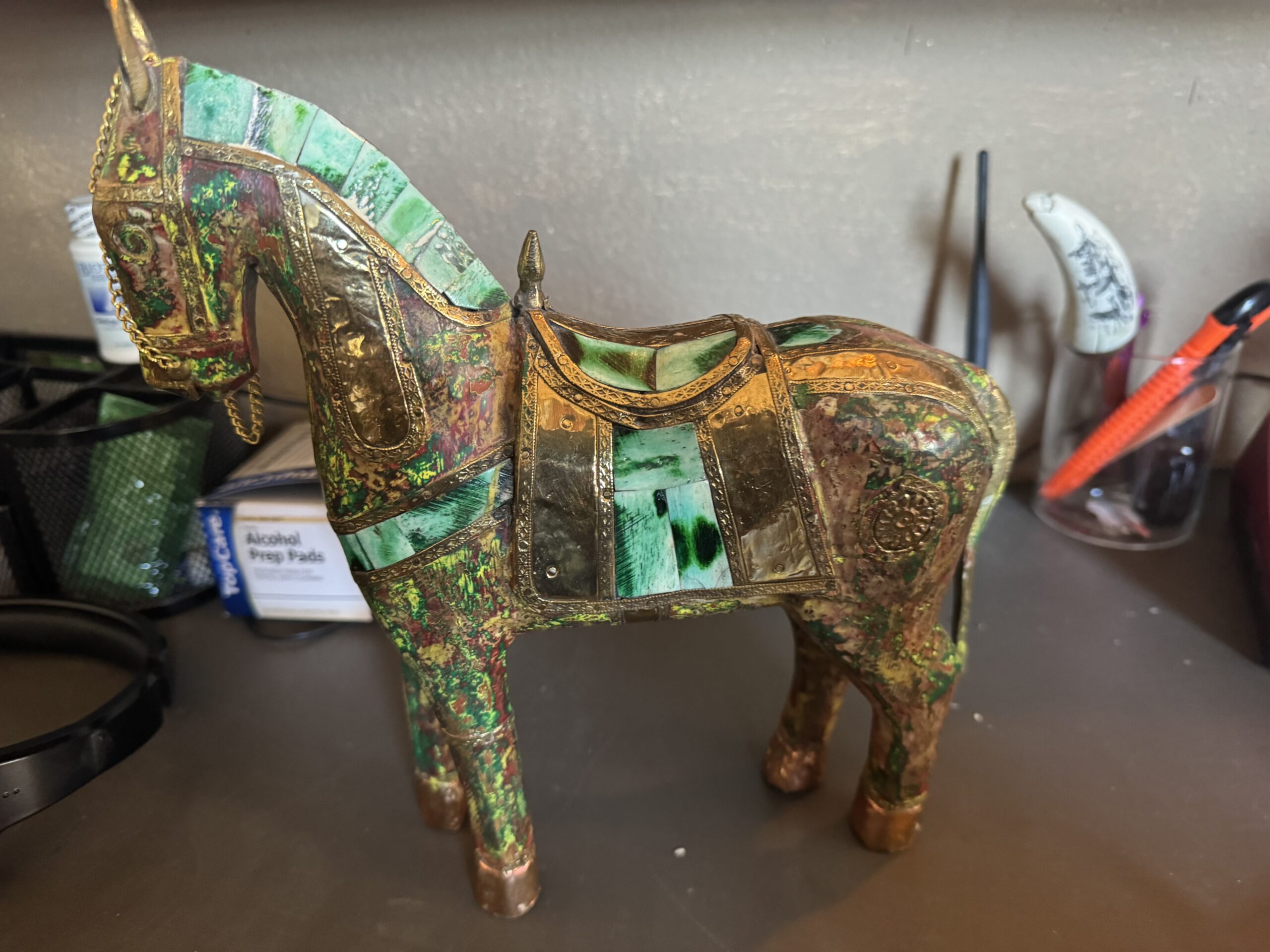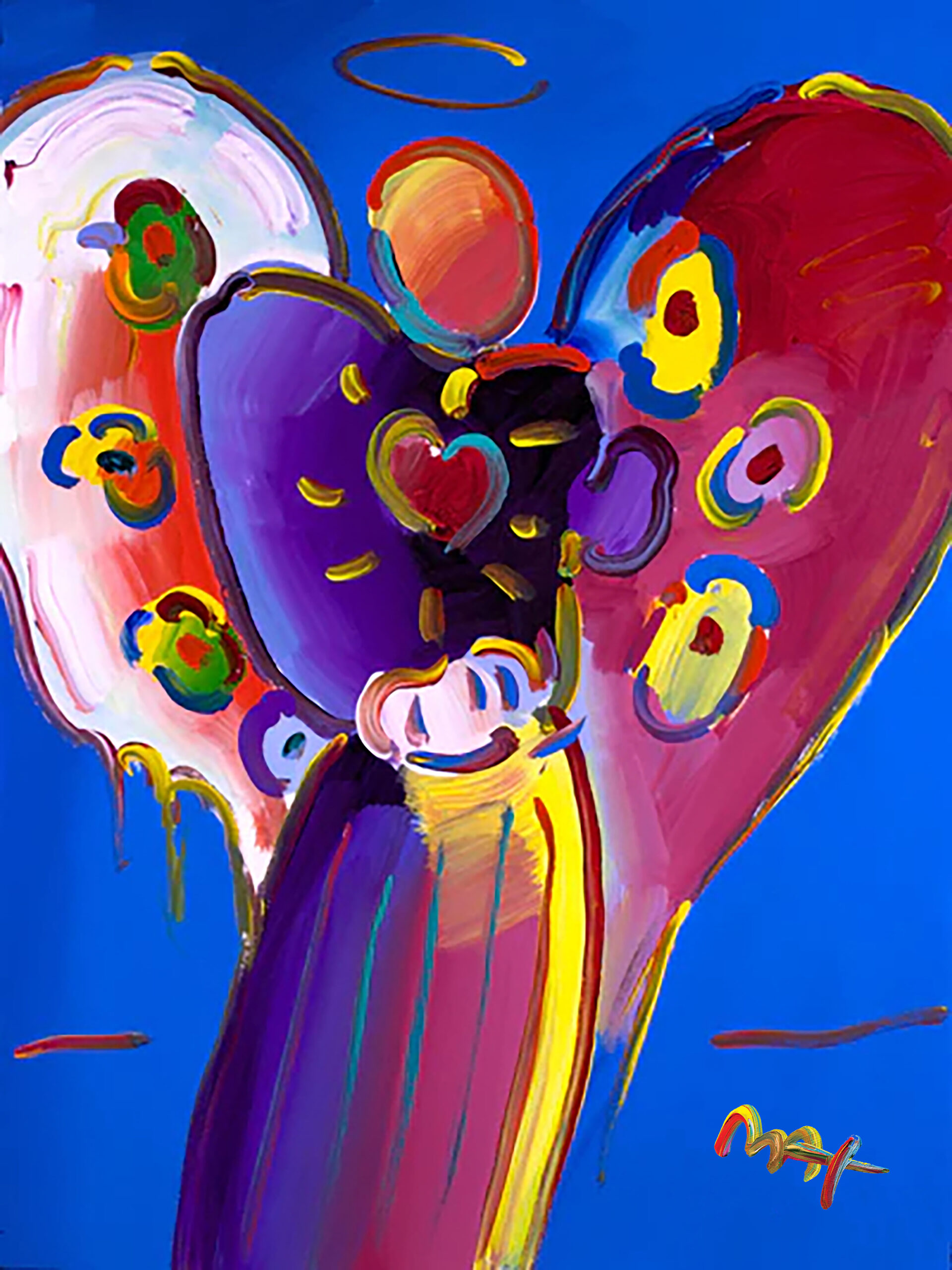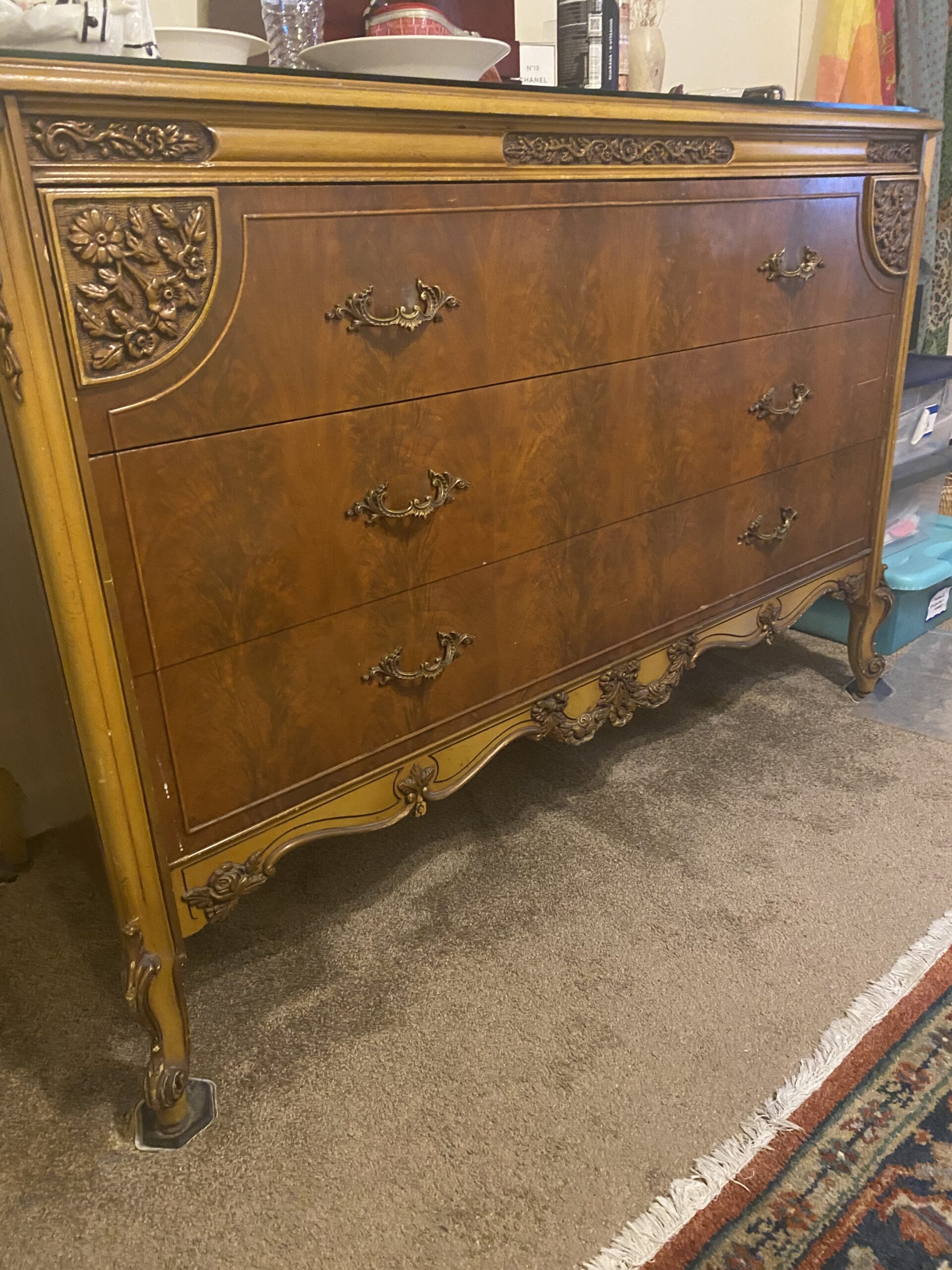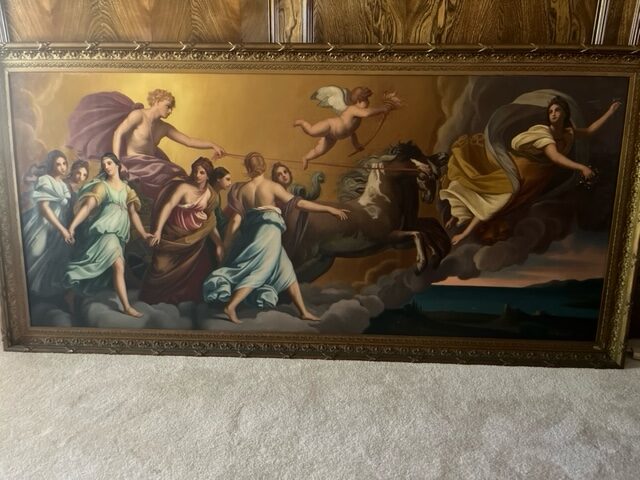This art appraisal report offers an in-depth and impartial assessment of the artwork in question, grounded in the appraiser’s expertise and familiarity with the art market. All the information and data analyzed in this report is sourced solely from the client.
Having a clear understanding of the value of your artwork is crucial in making informed decisions about its future. This report provides a precise estimate of the value of each piece, using US dollars as the base currency. It is not intended to encourage the sale of the artwork, but rather to provide valuable information on how to proceed should the client decide to do so in the future.
Detailed description of the artwork, including its medium, dimensions, and condition.
Checking Originality: Identification with Artificial Intelligence Test
In the quest to identify a match, Image Search employs advanced AI techniques to scour databases of images in order to find visually similar images. This is achieved through the use of various algorithms such as pattern recognition and machine learning. While some results may be considered as “matches” due to a clear similarity, other results may be inconclusive as they rely more on chance rather than any specific similarities. To conduct this test, a front-facing image was used as a reference to search for similar images on the internet.
The results of the automatic recognition are not conclusive. If a match is found, it will be shown below:
What specific information can we obtain from this test?
The algorithm found an exact match. This result is associated with prints, either regular or limited edition prints, that were hand signed by the original artist of this piece of art. It’s important to determine what type you have, so I need to go through the research and inspection process.
Age estimation
In order to accurately determine the age of 1981 “The Great Gretzky” Signed Serigraph by LeRoy Neiman With Certificate of Authenticity, one must consider several factors. Frame construction can be used to provide an initial clue to the age of the painting, as style and materials used in frames have changed over time. Color palette can also be used to help identify the age of a painting, as certain color combinations were popular during certain time periods. Additionally, the Certificate of Authenticity can be used to provide additional evidence of the painting's age. Finally, the signature of the artist, in this case LeRoy Neiman, can also be used to help identify the age of the painting. By considering all of these factors, one can make an educated guess as to the age of the painting.
Based on this information and the pictures provided, I can estimate this painting was made in 1981.
Condition of the artwork
This 1981 "The Great Gretzky" Signed Serigraph by LeRoy Neiman is in good to excellent condition and does not require any restoration. There are no appreciable damages and any damage that may exist is minimal. The painting is accompanied by a Certificate of Authenticity from the publisher. This painting is a great example of Neiman's work and a great addition to any art collection.
Artist’s name, biographical information, artwork’s provenance (history of ownership) and exhibition history.
I study and research the signature of artwork to see if it matches any known signatures. In this case as there is a COA, I don’t have doubts this is an original limited edition print by listed artist Leroy Neiman.
Leroy Neiman (1921–2012) was an American artist known for his vibrant paintings and prints of sporting events, celebrities, and leisure activities. He was born in St. Paul, Minnesota, and studied at the School of the Art Institute of Chicago. Neiman was a masterful colorist who used a variety of printmaking techniques, including lithography, etching, and screen-printing, to reproduce his work. As a printmaker, he was renowned for his ability to capture the dynamism and energy of the subjects he depicted. He achieved international acclaim for his vivid, larger-than-life images, which often juxtaposed the mundane with the extraordinary. His work was widely exhibited and collected by major museums and private collectors around the world.
Detailed analysis of the artwork’s style, subject matter, and significance within the artist’s oeuvre and the broader art world.
I can check if the style and type of painting match those of the artist referenced.
The "The Great Gretzky" by LeRoy Neiman is an iconic 1981 serigraph. It is characterized by its bold and vibrant colors, energetic brushstrokes, and dynamic composition. With its vivid and expressive imagery, it captures the essence of the moment it portrays. The serigraph is also highly detailed, allowing viewers to appreciate the nuances of the scene. The artwork is signed by the artist and accompanied by a Certificate of Authenticity, making it a valuable and treasured addition to any collection.
Comparable sales information, including prices realized at recent auctions or private sales of similar works by the artist or in the same medium.
In order to provide an up-to-date estimate of the fair market value for LeRoy Neiman's 1981 “The Great Gretzky” Signed Serigraph with Certificate of Authenticity, I utilized the data collected, including auction prices and other relevant market information. This is crucial as it can be used in various contexts such as insurance, estate planning, and art market analysis. It also offers a valuable insight into how the valuation of the artwork may have changed due to environmental or economic factors, such as the appreciation of LeRoy Neiman's artwork as time has progressed.
The auction prices were a significant factor in determining the current market value of the artwork, as they are based on actual transactions between buyers and sellers in the art market. As such, they are a strong indicator of the expected value of the piece in the near future.
By analyzing auction results from the last 6 months, I was able to accurately determine the current fair market value of the artwork. This approach provides a comprehensive view of how the value has changed over time and gives insight into any potential areas of appreciation or depreciation in its price. Additionally, it allows me to adjust my valuation as new auction prices become available.
Conclusion
Investing in art can be an excellent way to diversify one's portfolio and to add a unique piece of beauty to one's home. Art can be a great investment because it has the potential to appreciate in value over time, diversifying one's portfolio by including a tangible asset. Furthermore, buying a piece of artwork can be a great investment because it is something that can be enjoyed and appreciated for generations to come. Art can also be a great way to invest in a piece of history, as well as in a work of art that may be of great cultural or historical significance. Additionally, art can be a great way to provide a source of income, as artwork can often be rented or sold for profit. Overall, investing in art can be a great decision for those looking to diversify their portfolios, invest in something beautiful and unique, and to potentially provide a source of income.
This painting can be considered valuable by the art market because of its rarity. The serigraph was created in 1981 by renowned artist LeRoy Neiman and is signed by him, making it a highly sought-after item. Additionally, it comes with a Certificate of Authenticity, which adds to its value. The painting also has historical significance, as it is based on hockey legend Wayne Gretzky, who is one of the most recognizable sports icons of all time. This adds to its collectibility and makes it a valuable piece of art.
Final Appraisal Value ($)
5,000-6,000$
Appraisal Report made by:
Andrés Gómez
BSc, MSc, Expert Art Appraiser
10+ years of experience in Online Art Appraisals
100k+ Customers Served
Antique Store Owner
You can check my portofolio of past appraisals here:
https://www.appraisily.com/andres-portofolio/

Relevant photographs or supporting documentation, such as condition reports or expert opinions
A detailed summary of the appraisal process and the appraiser’s qualifications.
Mark-to-market art appraisal is a vital method for determining the current value of a piece of artwork. This form of valuation requires an appraiser to consider various factors, such as market conditions, the condition and age of the artwork, and the artist’s reputation. By taking all these elements into account, a mark-to-market art appraisal delivers an accurate assessment of a piece of artwork’s current market value.
The artist’s reputation, as determined by their track record in gallery and museum shows, awards, and other accomplishments, is also considered in mark-to-market art appraisal. Appraisers use this information to determine if the value of a piece is likely to increase or decrease over time. Additionally, they will inspect the condition of the artwork and note any signs of wear or damage that might affect its future resale value.
When performing mark-to-market art appraisals, appraisers also consider market conditions by researching current art market trends and comparable works that have recently sold. This information is used to provide an estimate of a piece’s worth at that point in time. By considering all of these factors, mark-to-market art appraisal is able to give a reliable indication of the current value of a work. This kind of valuation can also ensure fair prices are paid and received when buying or selling art.
In summary, mark-to-market art appraisal is a crucial tool for determining the true value of a piece of artwork, enabling buyers, sellers, and appraisers to make informed decisions regarding its worth. It takes into account multiple aspects to provide an accurate assessment of the current market value of a work. This information can be used to ensure that buyers and sellers are getting a fair price for the artwork, and that the appraiser’s valuation is up-to-date and reflective of current market conditions.
In the case of insurance replacement appraisals, mark-to-market art appraisals can also be used to accurately estimate the cost of replacing a lost or damaged artwork. The current value, as determined by the appraisal, is then used to determine the amount that the insurance company will pay back to the policyholder. This way, policyholders can rest assured that they will receive an appropriate sum for any artwork that needs to be replaced due to accidental damage or theft. Additionally, this kind of valuation helps insurers ensure they are not being overcharged when artwork needs to be replaced as part of a claim settlement.
The appraisal process is a thorough evaluation of the item or items in question. It involves researching and analyzing the information provided by the requester in order to provide an accurate estimate of its value. The appraiser takes into account factors such as condition, rarity, demand, and market prices. Photographs and detailed descriptions are especially important when providing an appraisal, since they help the appraiser identify any potential flaws or defects that could affect the item’s worth. By using all the resources that are available, an evaluation can be done quickly, efficiently, and with a high level of accuracy.
A statement of the appraiser’s liability and any potential conflicts of interest.
A qualified art appraisal, also known as a formal written evaluation, is a professional assessment of the monetary value of a piece of art by an individual who has specialized knowledge, expertise, and training in the field of art appraisal. This person must meet certain educational and professional requirements, including experience in researching and evaluating art, as well as knowledge of the art market and current market trends. The purpose of a qualified art appraisal is to provide an objective and unbiased opinion of the value of a piece of art for various purposes, including insurance claims, tax planning, estate planning, or to help determine a fair price for a sale or purchase.
We are committed to providing our clients with the most accurate and unbiased appraisal reports. To ensure impartiality, we adopt a flat rate, fixed fee structure for all appraisals, instead of a percentage-based fee. This eliminates any potential conflicts of interest between the art appraiser and the final report value. Our appraisal reports are in compliance with the Appraisal Foundation’s USPAP (Uniform Standards of Professional Appraisal Practice) standards and guidelines, which are widely accepted as the ethical and performance standards for appraisers. This guarantees that our reports are of high quality and legally defensible.
How to sell this artwork.
We have a structured guide to help you sell your artwork, you can find it here.
